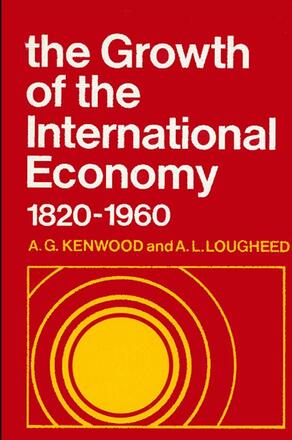Introduction
Part I: The International Economy, 1820-1913
1. The causes of the growth of the international economy in the nineteenth century
Technological progress: industry and agriculture
Technological progress: transport and communications
The accumulation of capital
The growth of world population
The supply of natural resources
The growth of real incomes
The spread of economic freedom
2. International long-term capital movements, 1820-1913
The growth of foreign investment
The direction of foreign investment
Determinants of capital outflow
The use of foreign funds in borrowing countries
Economic consequences of foreign investment
3. International migration, 1820-1913
European migration, 1821-1913
Migration and its causes
Aids to mass emigration
Economic consequences of migration
Intracontinental migration
Asiatic migration and tropical development
4. Commercial policy in the nineteenth century
Britain adopts free trade
The spread of free trade
The consequences of free trade
The return to protection
The economic consequences of protection
5. Foreign trade in the nineteenth century
The growth of world trade before 1913
The direction of world trade before 1913
The composition of world trade before 1913
Conclusion
6. The growth of a multilateral payments network
Introduction
Development of the system
Foreign investment and the multilateral settlements network
Concluding remarks
7. The growth of an international monetary system: the gold standard before 1913
Bimetallic and monometallic standards
Britain adopts the gold standard
International monetary standards up to 1870
The spread of the gold standard
The role of sterling as an international currency and the importance of the London capital market
The working of the gold standard
Divergence between classical theory and empirical evidence
Other features of the adjustment mechanism
Conclusion
8. International aspects of economic growth in the nineteenth century: the spread of industrialization
Introduction
The spread of industrialization
The contribution of the international economy
Causes of the limited spread of industrialization
Conclusion
9. International aspects of economic growth in the nineteenth century: the export economies
Introduction
Regions of recent settlement
The export economies
Economic imperialism and colonialism
10. Trends and fluctuations in the international economy before 1913
The international transmission of business cycles
Long swings and the international economy
Long-run trends in the terms of trade
Part II: The Interwar Years
11. The international economy in the interwar years
Primary production
Population growth and migration
Manufacturing production
The intensification of protectionism
12. The restoration of the gold standard and the economic recovery of the twenties
Post-war inflation and the restoration of the gold standard
Weaknesses in the post-war gold standard:international investment
Institutional weaknesses of the restored gold standard
The economic boom of the late twenties
13. The collapse of the gold standard and the disintegration of the international economy
Crisis in agriculture
Financial crisis in Europe
The end of the gold standard
Growth of restrictions on finance and trade
International financial co-operation
Regional economic co-operation
International commodity control schemes
Conclusion
14. International trade during the interwar period
The growth of world trade in the interwar years
The direction of world trade between the wars
The changing composition of world trade
Diminishing trade hypothesis
Part III: The Post-1945 International Economy
15. Wartime preparations for the future international economy and post-war reconstruction
The International Monetary Fund
The International Bank for Reconstruction and Development
Post-war reconstruction
16. The international economy in the 1950s
Population growth and migration
International capital flows: private investment
International capital flows: foreign aid and official long-term loans
Technological change and world trade
Conclusion
17. The international monetary system, 1945-60
Performance of the system, 1945-52
Performance of the system, 1953-60
18. International commercial policy, 1945-60
The International Trade Organization
The inauguration of GATT
Discrimination in trade relations
Regional trading blocs
International commodity agreements
Conclusion
19. Trade and growth in the international economy, 1945-60: the developed economies
Trends in trade
Economic growth in the developed economies, 1945-60
20. Trade and growth in the international economy, 1945-60: the developing and centrally-planned economies
The developing economies
The centrally-planned economies
21. Epilogue
Index
